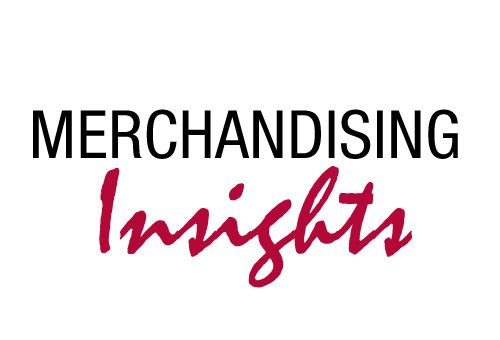In 1977, at age 24, I had the good fortune to become sales manager of a fledgling natural foods distributor in the Northeast. Over the next 20 years, we grew the business from $900,000 to $225 million, when we merged Stow Mills with United Natural Foods. While I was a “natural foodie” and had a good sense for business, my bosses Richard Youngman and Barclay McFadden were MBAs with deep business experience. Whenever I confronted a new or difficult situation, I was always able to walk to the doorway down the hall and ask for help.
Because of the phenomenal growth of our company and industry, for 20 years I had a front row seat watching independent natural products retailers grab hold of a tiger by the tail. Back-to-back yearly double-digit growth from the 1980s forward pushed many independents to ever-larger stores with ever-expanding workforces. Like me, some of these retailers had never managed such large and dynamic businesses. I have dedicated my company, Retail Insights, to serving you, the independent retailer, in the hope of providing you with “the doorway down the hall,” where you can find help.
10 Things to Consider in 2011
1. Your time horizon. Before you consider any action, consider how long you want to be in the business; one year, five years, 10 years or more? If you are a short-timer, you can skip directly to number 10 on this list and find someone to talk to about your exit strategy.
2. Your vision. If you are still reading this, you must be planning to stay in business for longer than a year or two. How do you view your store? Are you like the majority of independent natural products retailers who are in this as a lifestyle, or do you view your business more seriously? Here’s a test to find out: Do you regularly take a lot of food and other products out of the store without recording it on your books? Do you count inventory less than once per year? Do you manage your store without a profit and loss statement and balance sheet? Do you take little or no tax deduction for depreciation each year? If push came to shove with more aggressive competitors, would you close your store? If you answered yes to some or all of these questions, you are probably a lifestyle retailer. There’s nothing wrong with this and you have lots of company. You’ve picked a sweet industry in which to have a lifestyle business; we’ve grown continuously since 1980 and will continue to grow for the foreseeable future. Go ahead and skip down to item 10 and then relax.
 3. Your goals. OK, you’re still reading. What would you like to accomplish? Being a profitable company is essential, so this doesn’t count as a goal. Being more profitable than you are now is a good goal. Anything else? How strongly do you feel about improving the health status of your community? A good way to test this is to imagine that you are retiring. What would you want to see happen with your store? Would it be all the same to you if it closed rather than going to a new owner, or to your children? If it doesn’t matter to you if your store closes, then you probably aren’t too concerned about preserving your store as a community asset. Again, this is fine. A lot of independents feel the same way.
3. Your goals. OK, you’re still reading. What would you like to accomplish? Being a profitable company is essential, so this doesn’t count as a goal. Being more profitable than you are now is a good goal. Anything else? How strongly do you feel about improving the health status of your community? A good way to test this is to imagine that you are retiring. What would you want to see happen with your store? Would it be all the same to you if it closed rather than going to a new owner, or to your children? If it doesn’t matter to you if your store closes, then you probably aren’t too concerned about preserving your store as a community asset. Again, this is fine. A lot of independents feel the same way.
How about your staff? Do you feel an obligation to help them gain more skills and move ahead in the business? Many retailers I know enjoy creating a growth path for their employees, and this impulse motivates them to expand the store. If this is not you, no worries; you don’t owe anybody anything.
Perhaps you want to improve yourself. Maybe you’ll take advantage of continuing education in nutrition or in business. Or, maybe you’d like to harvest some of the fruits of your labors and take more time off. There are plenty of independents whose day-to-day operations proceed without them. If this is your goal, be sure to keep some checks on your operation; I know too many more-or-less absentee owners who’ve been burned by employees who like to play while the cat is away.
4. Your investment. If you are like most independents, your largest investment was when you opened your store. And now, unless something breaks, you are not in the habit of replacing or refreshing your equipment, fixtures, floors or lease area. If this is true for you, you can improve your shopping experience for customers if you begin to upgrade and refresh your presentation in a five- to seven-year cycle. Plan to budget $5 to $6 per square foot of your gross lease area per year to accomplish this. Most conventional retailers spend at least this much and if you do not, over time, your customers will begin to prefer your competitors that do.
5. Your competitive advantage. Independent retailers face more competition than ever. To sustain success, think about how you add value beyond the products you sell. Why? Because your competitors carry all or most of them. In my view, the single most powerful competitive advantage independents have is engaging each and every customer in a one-onone conversation that blossoms into a deep relationship over time. Done well, your customers will spread enthusiastic word-of-mouth kudos for your store, driving new customers to you. There are other advantages, of course. Maybe you have a beautiful store, a particularly large selection, a convenient location or are a certified nutritionist. Add these to your “one-on-one” customer relationship for even greater advantage.
6. Your pricing. With more competition, independents face increasing downward pressure on prices. Ask your vendors, distributors and brokers, how you can achieve deeper purchase discounts on an ongoing—not temporary— basis. Pass along all or most of these discounts in your shelf pricing. In this way, you will protect your gross profit margin percentage while keeping your competitive price gap as small as possible. DO NOT discount by cutting your margin. This is a shortcut to bankruptcy. Remember: you cannot win a price war with larger competitors because they buy better than you. Game over.
7. Your brand. In my seminars, I often ask attendees if they view their stores as a brand, separate and distinct from the products on the shelf. To my dismay, most retailers do not view their stores as a unique brand. However, I can prove to you that your customers think of you as a unique brand. Here’s how: You’ve had the experience of the customer that comes into your store and says something like, “I ran out of my bottle of supplements, you know, the one with the green label?” And, of course, you have to play 20 questions to figure out exactly which item they want. Well, the customer doesn’t remember the PRODUCT you sold them, but they remember WHERE THEY BOUGHT IT! You are indeed the brand.
8. Your message. So, now that you know you are a unique brand, what’s your unique message? If you spend the rest of 2011 figuring this out, 2012 will be a much better year. I promise. Here’s a hint: It has something to do with how you add value to the shopping experience beyond the products you sell. Hint #2: The most powerful messages don’t mention price.
9. Your strategy. Well, you’re still reading, with only two items left to go. I assume you are a serious retailer. Strategy requires that you look out as far as possible into your business future to see where you want to be and then figure out how to get there, starting with present day. Here’s some good news: If you’ve thought about the previous eight items, you’re already on your way to crafting your strategy. How many stores do you want to have? How many markets (trade areas) do you want to serve? How aggressively do you want to compete with food retailers for the “dinner” shopper? The more perishables such as fresh produce, meat, deli, dairy and bakery products you have, the more skill it takes to operate the store. The reward for offering perishables is a more vibrant store and a more frequent shopper. Yes!
10. Your industry. Many of you have been around long enough to remember the days before DSHEA, the Dietary Supplements Health and Education Act of 1994, the federal law that protects your free-speech right to discuss the health benefits of good nutrition with your customers. Before the law, federal agencies like the U.S. Food and Drug Administration mounted regular raids on natural products retailers, seizing products off the shelf and threatening to close stores down. If you are not yet a member, think about joining your regional and national Natural Products Association (www.npainfo.org). We have something to protect. WF
Jay Jacobowitz is president and founder of Retail Insights®, a professional consulting service for natural products retailers established in 1998, and creator of Natural Insights for Well Being®, a comprehensive marketing service designed especially for independent natural products retailers. With 34 years of wholesale and retail industry experience, Jay has assisted in developing over 900 successful natural products retail stores in the U.S. and abroad. Jay is a popular author, educator, and speaker, and is the merchandising editor of Whole- Foods Magazine, for which he writes Merchandising Insights and Tip of the Month. Jay also serves the Natural Products Association in several capacities. Jay is next scheduled at National Products Association Southwest Healthfest in Arlington, TX. Jay will speak during the afternoon program on Saturday, Aprl 9, 2011. He can be reached at (800)328-0855 or via e-mail at jay@retailinsights.com.
Published in WholeFoods Magazine, January 2011











